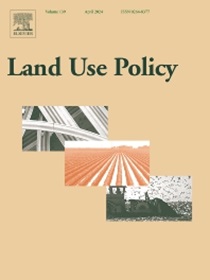The results of existing research predict that the area of abandoned land will increase in many European regions. One of the countries that are the most prone to this process is Poland where agriculture, after many transformations, is still an important sector of the economy. It is essential to determine drivers of the abandonment of agricultural land use in order to effectively counteract this process. Through the Common Agricultural Policy, the European Union financially supports farmers who use agricultural land in accordance with the environmental protection requirements. This study investigated to what extent the land use, the characteristics of agricultural holdings, the demographics as well as economic factors impacted the process of land abandonment in Poland during the period 2002–2020. The analysis was carried out using statistical and spatial data pertaining to the period before and after Poland’s accession to the European Union. Our results demonstrate that the share of abandoned land within the country's agricultural area has decreased from 9.7 % to 1.2 %. Direct payments to farmers and the agrarian structure of farms were the most significant factors affecting this process. Spearman’s rank order correlations between the share of abandoned arable land and the two mentioned variables are close to or higher than 0.5 in each analysed year. The obtained results did not confirm the common conviction that environmental factors play a decisive role in the process of cultivation abandonment.


